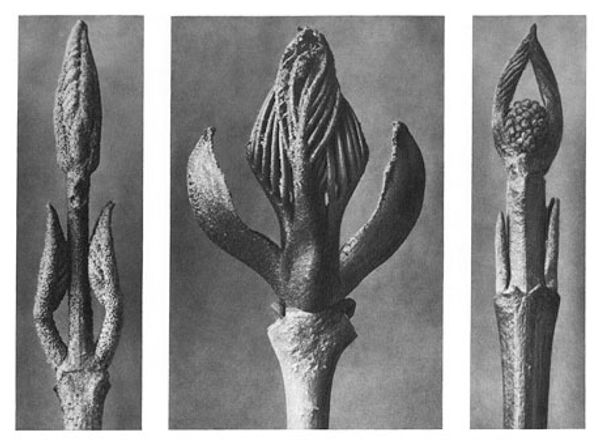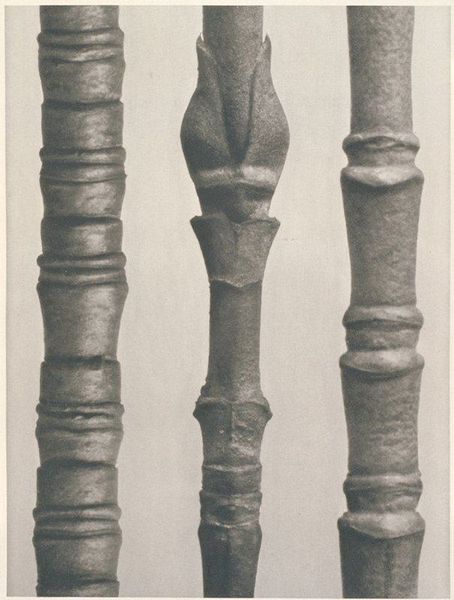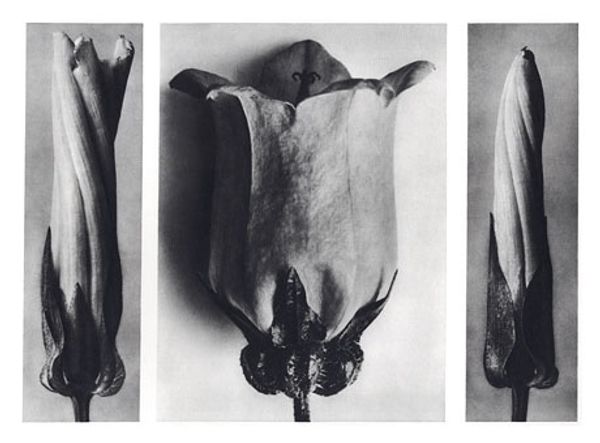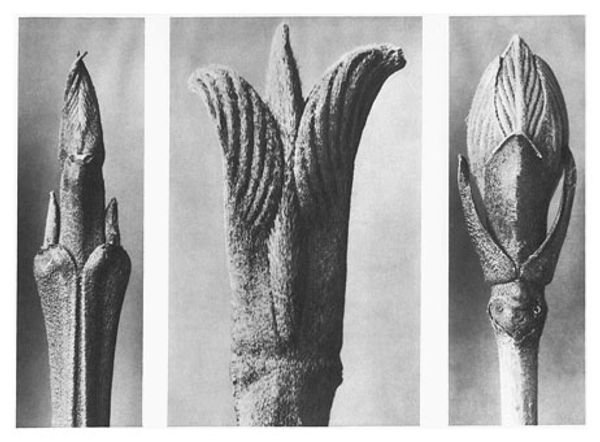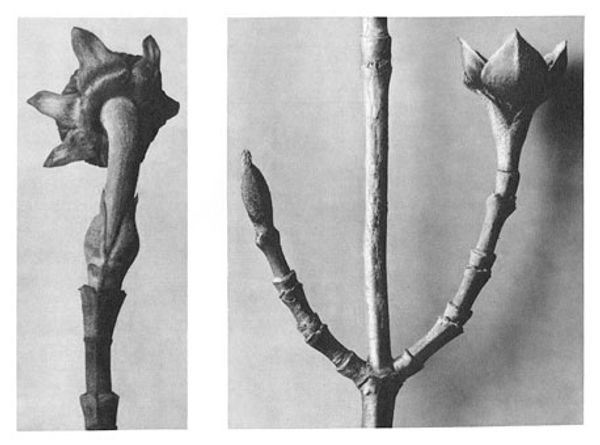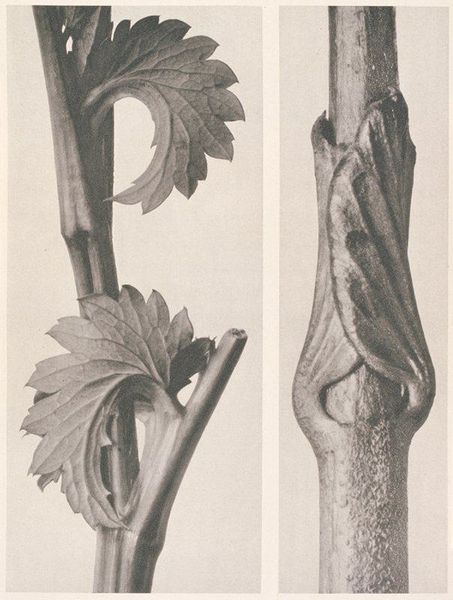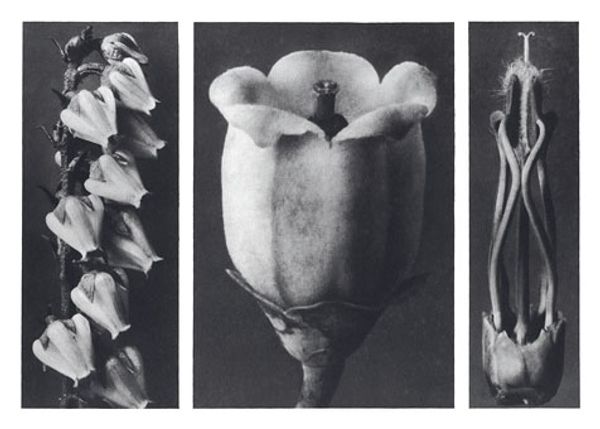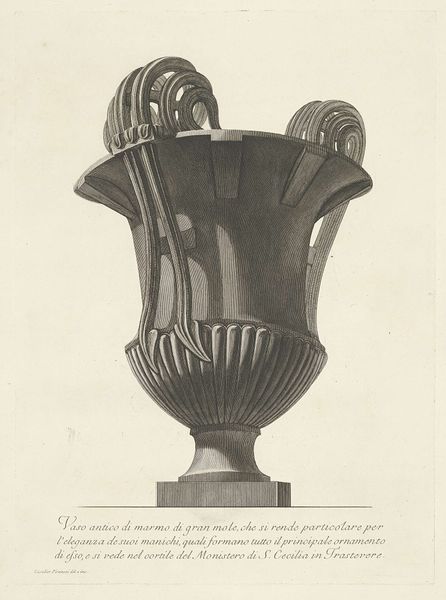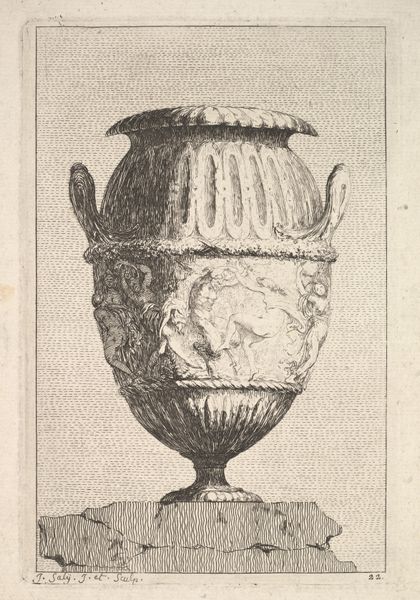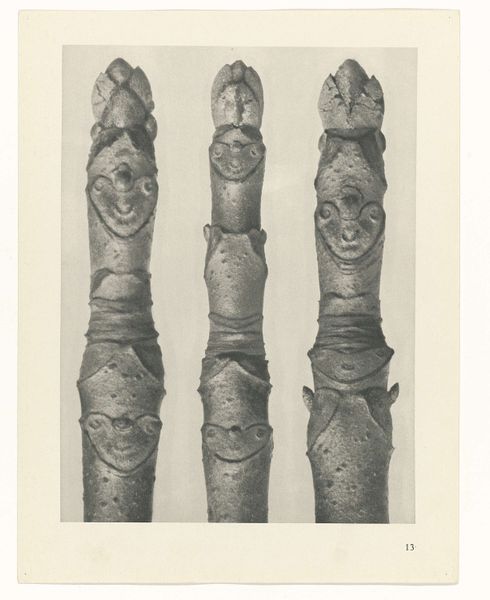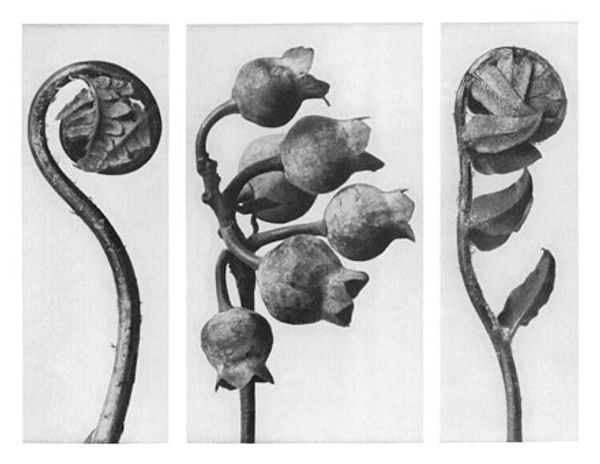
Copyright: Public domain
Curator: This stark diptych certainly makes a statement. At first glance, what's your take on it? Editor: It’s…imposing. And slightly ominous. The high contrast gives these seed pods an almost skeletal appearance, like remnants of some forgotten ritual. Are we meant to see beauty or decay? Curator: I see both. The artwork is entitled *Art Forms in Nature 104* by Karl Blossfeldt, dated to 1928. What we are seeing is the artist's attempt to expose inherent, often-unnoticed, structural design in natural elements, a poppy seed pod in this case. This is not painting, but a gelatin silver print. Editor: That explains the incredible detail. They are like architectural models! Given your area of focus, what resonances do these natural forms strike within art history? Curator: Well, Blossfeldt was aligned with the New Objectivity movement. So the approach is decidedly modern, reflecting a disillusionment with sentimental art and a move towards celebrating industrial and natural forms with stark clarity. Think also of surrealism at the time, and the artists that were interested in revealing the uncanny elements in organic matter. Editor: There's also a primal symbolism here, isn't there? Seeds, fertility, life cycles. The geometric structure contrasting with organic forms calls to mind ancient temples. I mean, look at the precise arrangement of openings at the head of the left seed pod—they give it this anthropomorphic feel, almost like a skull. Curator: Interesting parallel. Blossfeldt saw his work as primarily pedagogical. He intended his images to serve as visual aids, revealing an underlying order, a formal vocabulary shared by the man-made and natural world. But one could argue he achieved something far beyond pure instruction. His photographs reveal nature as a potential site of political resistance as well, particularly when we frame his artwork within broader intersectional narratives. Think about the economic and societal contexts and pressures Blossfeldt and the communities around him were encountering as he was capturing this botanical sculpture. Editor: So the geometry itself has political undercurrents, in his art. That's some insight, but how can forms be read as a sign of resilience, revolution or activism? Curator: Because these seeds resist conventional beauty standards. It disrupts notions that only some things have artistic merit and cultural significance, when this is actually ubiquitous, and always relevant to identity. Blossfeldt helps viewers like you and I realize we have power. Editor: It all goes back to that idea of revealing hidden structure. Thank you for widening my perspective and bringing up vital points. Curator: My pleasure, this exercise has clarified Blossfeldt’s revolutionary sentiment and design for me as well.
Comments
No comments
Be the first to comment and join the conversation on the ultimate creative platform.


